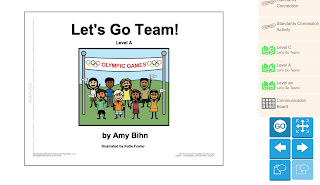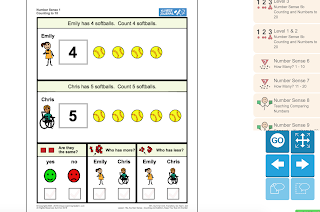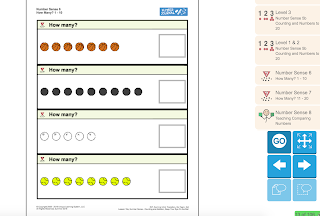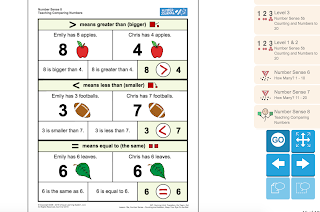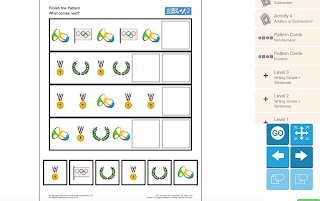I am a huge fan of sensory integration in my classroom.
Sensory integration gives my students what they need, allowing them to feel
better, behave better, and learn better. The more I teach students with
significant disabilities, the more I understand how important sensory
integration is. It has truly changed the dynamics of my classroom.
I know that some teachers are not a fan of sensory
integration in their classroom because they believe it is messy, they believe
it requires additional staff, or because it is unconventional.
With that said, here are some tips and trick to integrating sensory techniques into the classroom!
How I Incorporate
Sensory Techniques into My Classroom:
1)
Morning Sensory Spin: Every morning, we do
attendance, find our names or write our names, and sing each student a song.
While we are singing about a particular student, we allow that student to
either spin in my desk chair or bounce on the yoga ball. This allows EVERY
student in my classroom to receive some sensory input to start off his or her
day. I have found that almost every student loves spinning in my desk chair and
many love bouncing on the big yoga ball. Last year, we also had the option of
jumping on the trampoline while we sang.
2)
Sensory Seating: This is a common one. I have
yoga balls that the students can sit on. I allow my students to sit on their
chairs backwards. This allows for them to receive pressure on their abdomen
without moving their desk across from leaning on it. They lean on their chair instead
of the desk. I also have seat cushions that my students are allowed to sit on.
See the list of tools/equipment for more ideas.
3)
Sensory Center: I had a sensory center last
school year. I had eleven students and five aides, making for a very busy classroom.
In order to cut down on volume and distractions during centers, I had one of my
wonderful aides run a sensory center outside. The center consisted of riding
scooter boards up and down the ramp outside, spinning in the spinning cone, tossing balls back and
forth, writing with chalk, and blowing bubbles. My students loved it. This
year, my sensory center will be during free choice time. Instead of having free
play, I will be focusing on sensory input (bouncing on the balls, rolling on
the peanut ball, and spinning in spinning cone). ***Additionally, I HIGHLY recommend the books listed below for ideas for you sensory center or for P.E.
Spinning Cone, a favorite in our classroom
4)
Sensory Break: Some of my students require more
sensory input than others. For those students, I allow them to have a planned sensory
break during their instructional day. This is more personalized
and direct sensory integration. It looks different for each student.
5)
Movement Breaks: Typically, during a 30-minute
group lesson, we take 3 dance breaks. We love GoNoodle in my classroom. This
allows for my students to receive visual, auditory, and physical stimulation.
Also, I try to incorporate movement into my daily activities (rotations, flag
salute, music, and etc.) We repeat the same videos over and over again. This helps with skill development, confidence, and even speech (they can sing along if they know the song).
6)
Quiet Time: After recess and lunch, times that
have a large amount of sensory stimulation, I make sure to give my students a break.
After recess, we sit and watch educational YouTube videos and songs while we eat our snack.
After lunch, we sit and watch Signing Time. Many of my students just need a few
minutes to unwind and relax before moving on to direct instruction.
7) Sensory Boxes: I recommend creating sensory boxes for those students that need fidgets or sensory tools throughout their day. Each student can have a box filled with whatever sensory tools they need (putty, puzzles, lip whistles, etc.) Sensory boxes are especially helpful for oral motor tools, helping prevent the spreading of germs and saliva from student to student. Remember to clean oral motor tools every day and keep them clean and dry when storing.
Sensory
Tools/Equipment that I Love: (click on the words for Amazon purchasing information)






THESE TWO BOOKS ARE AMAZING! I HIGHLY RECOMMEND!












